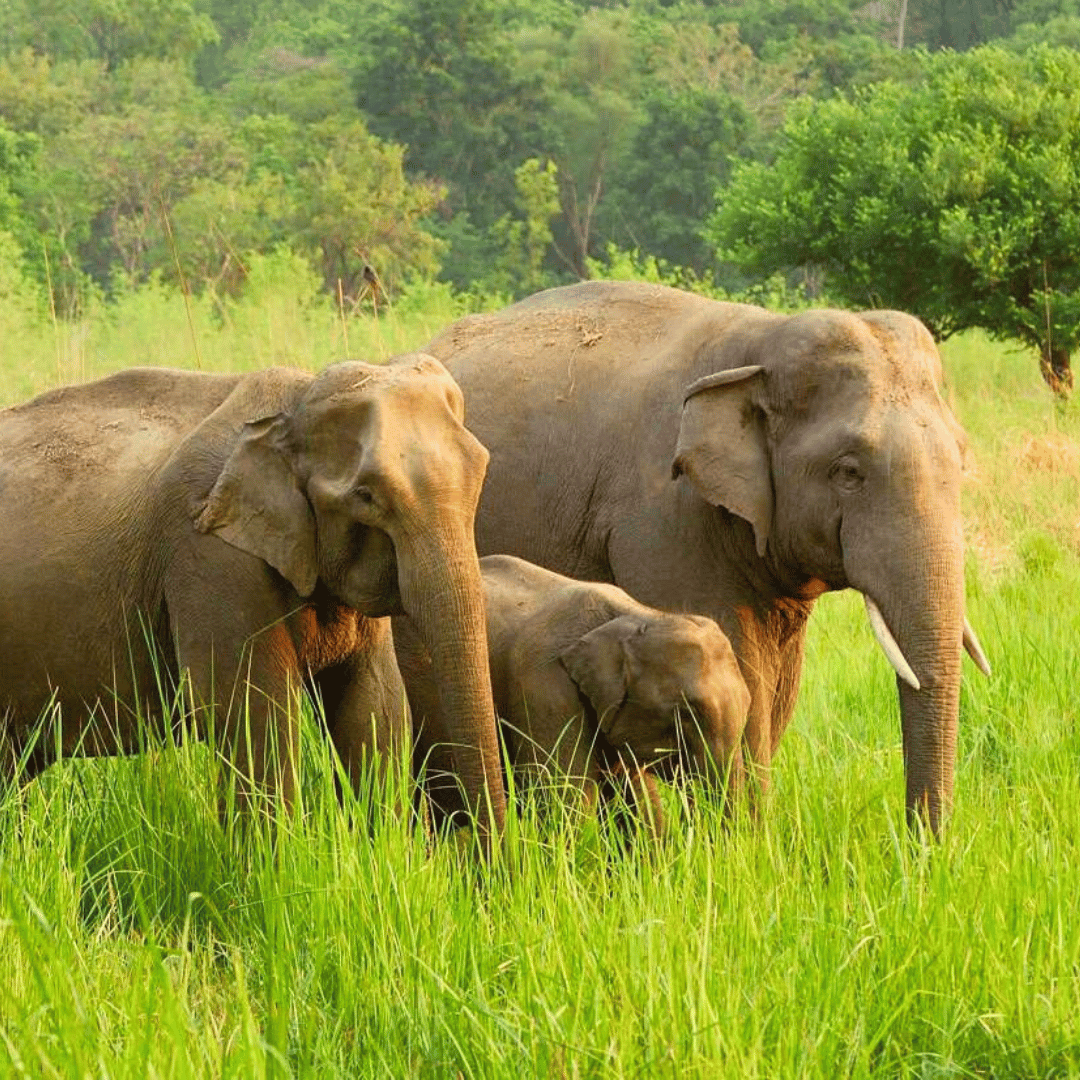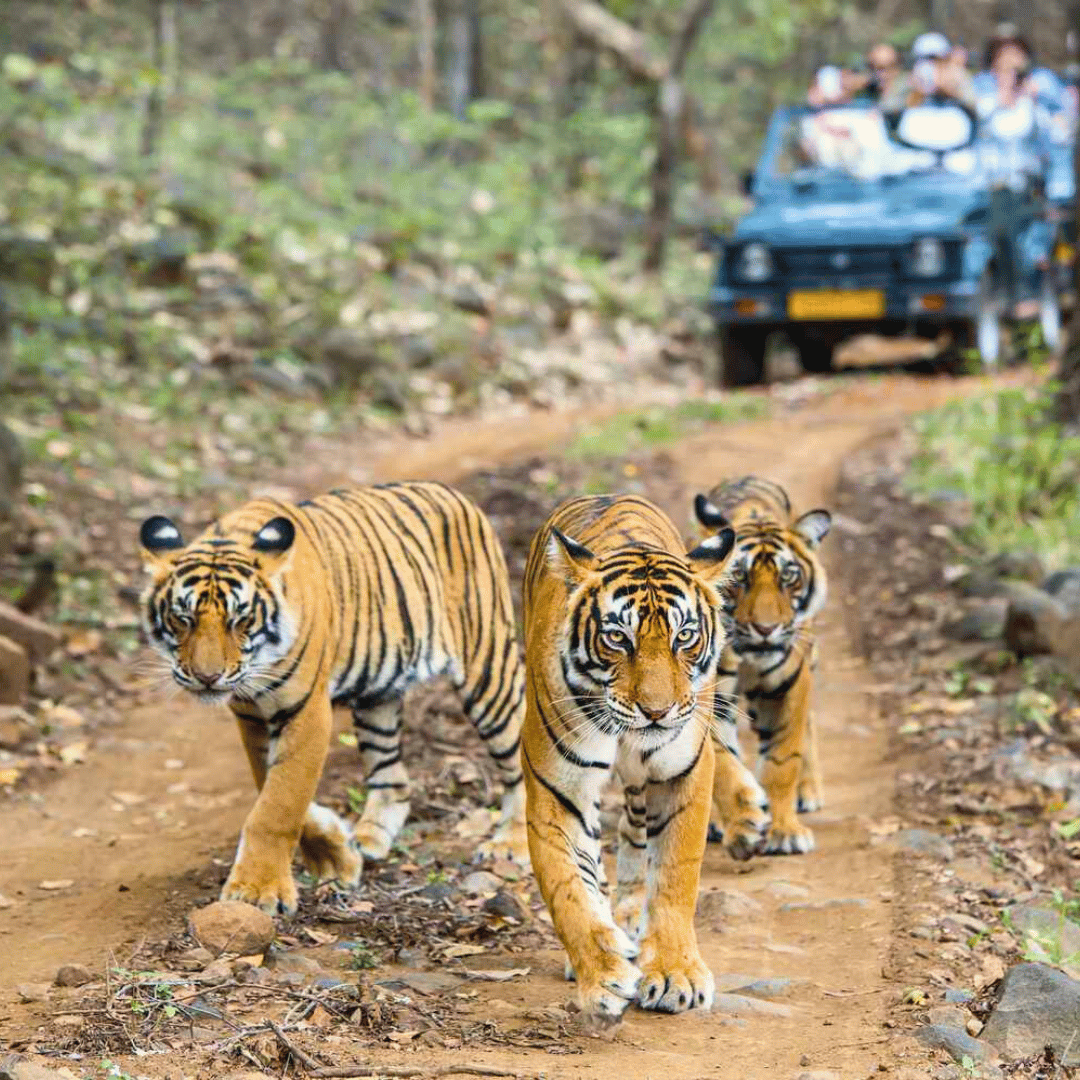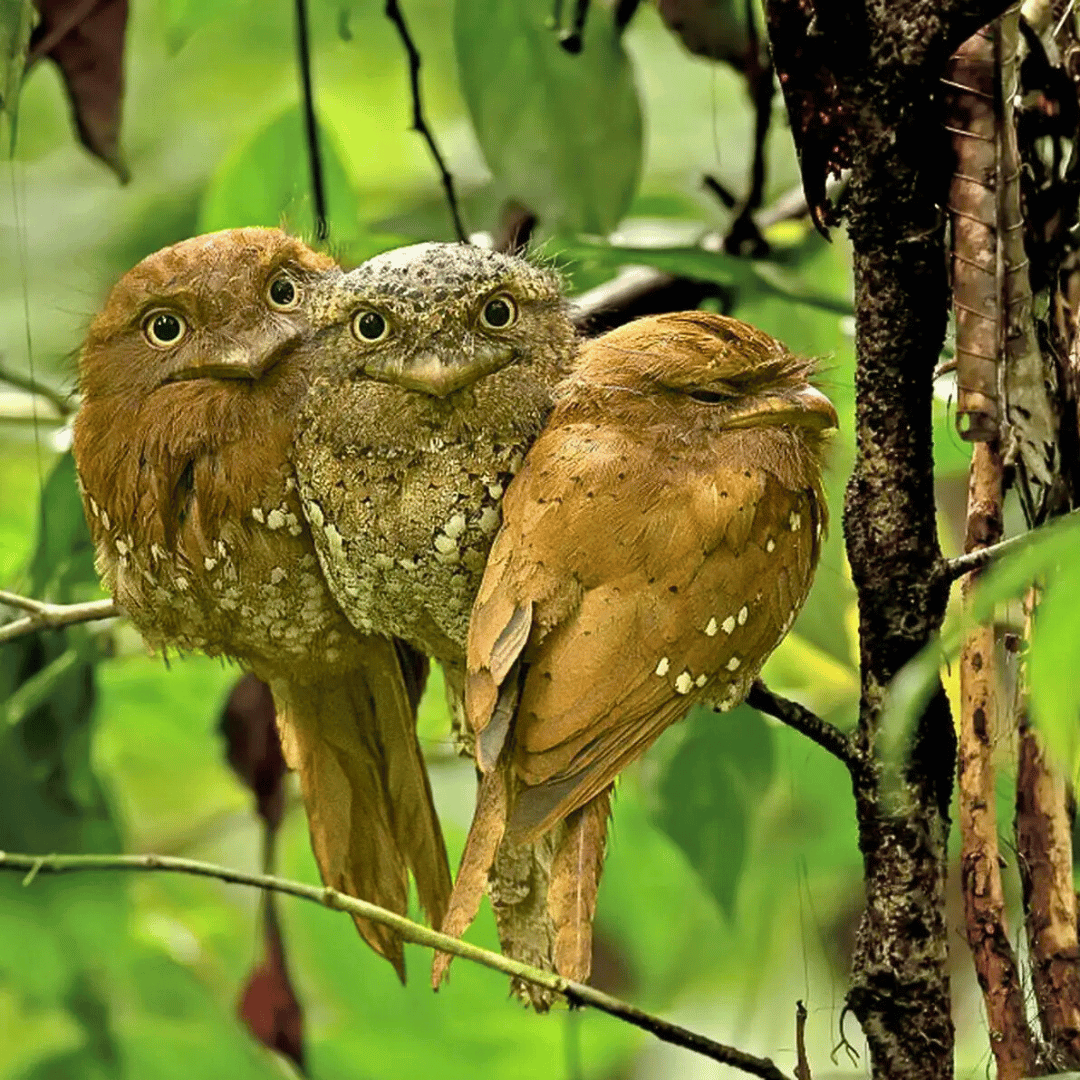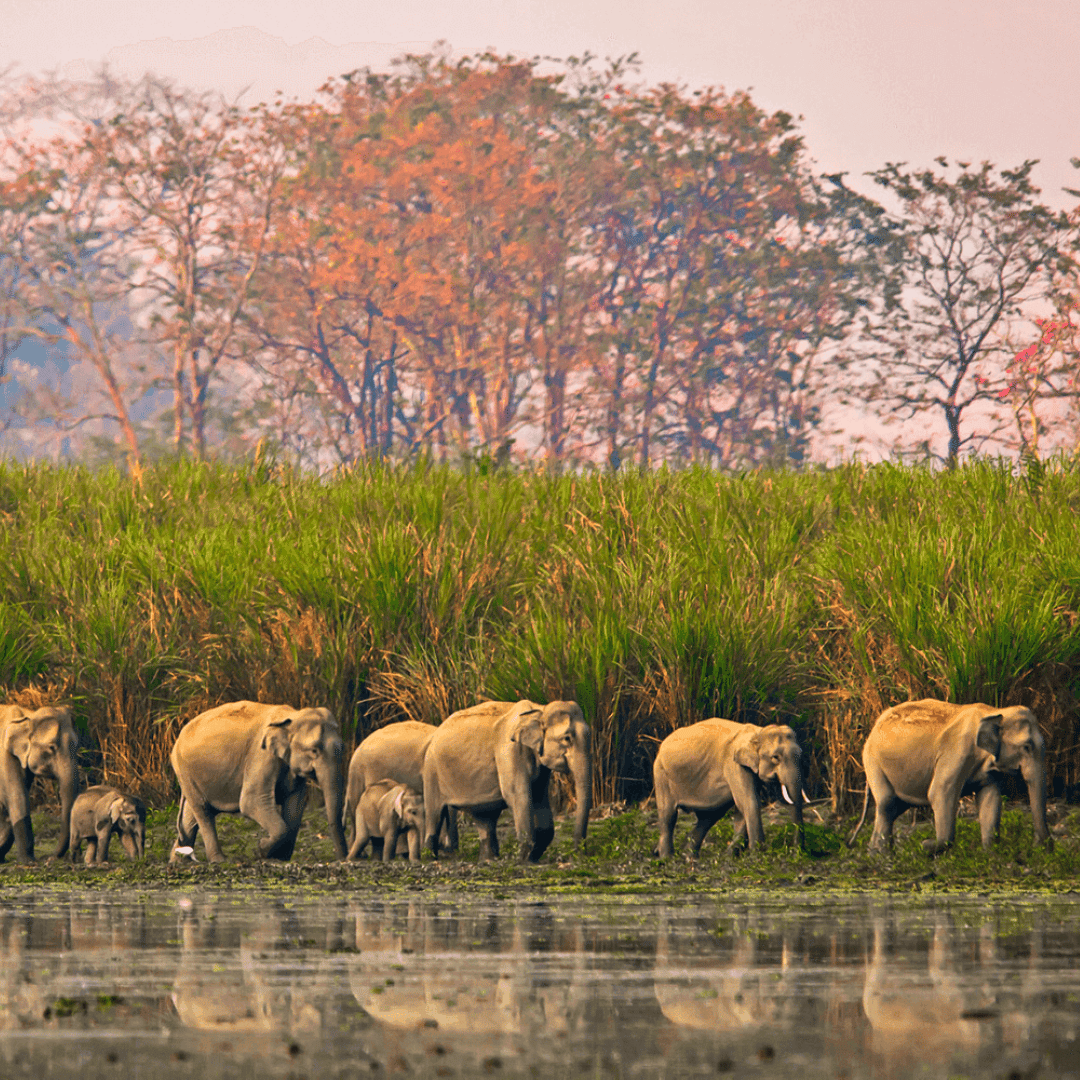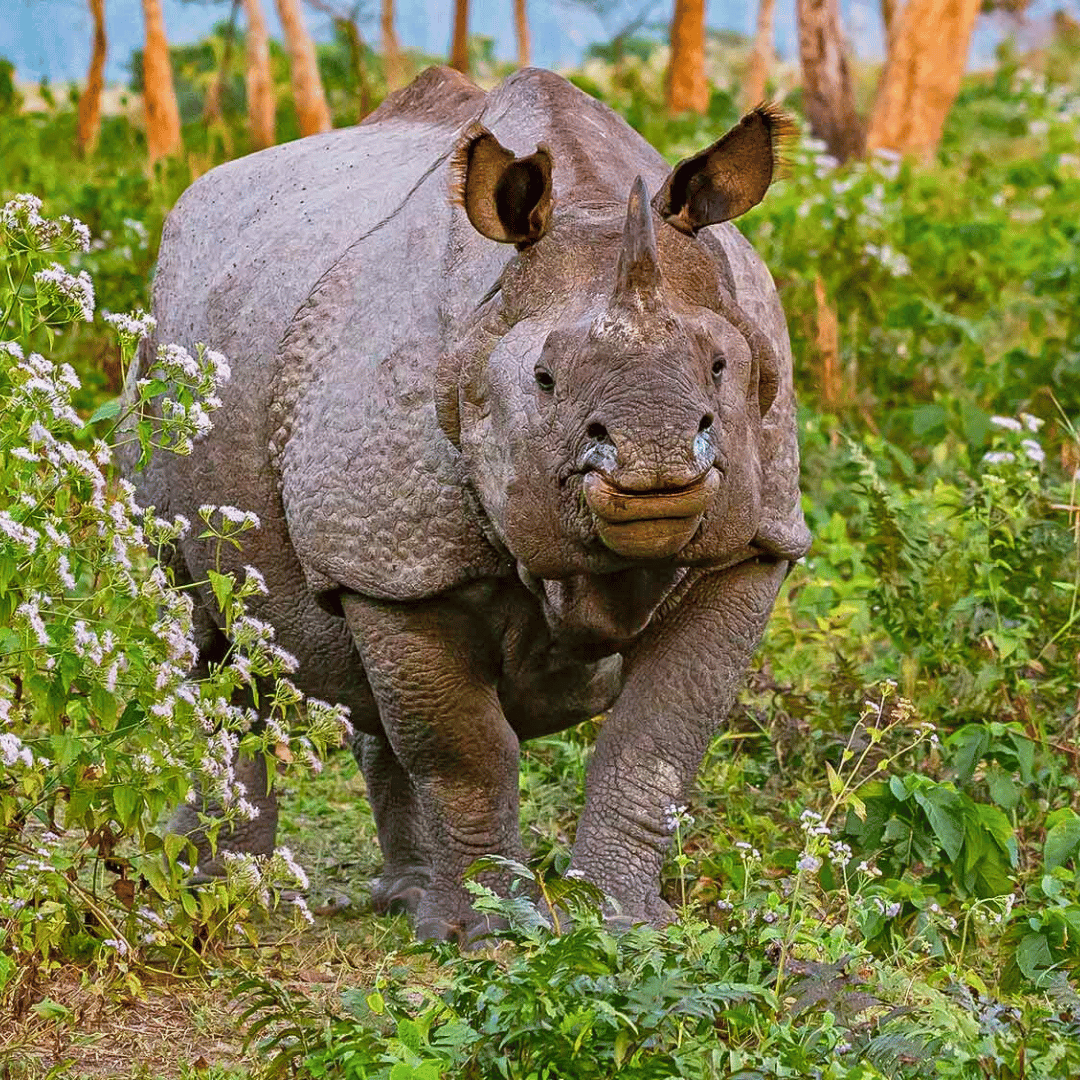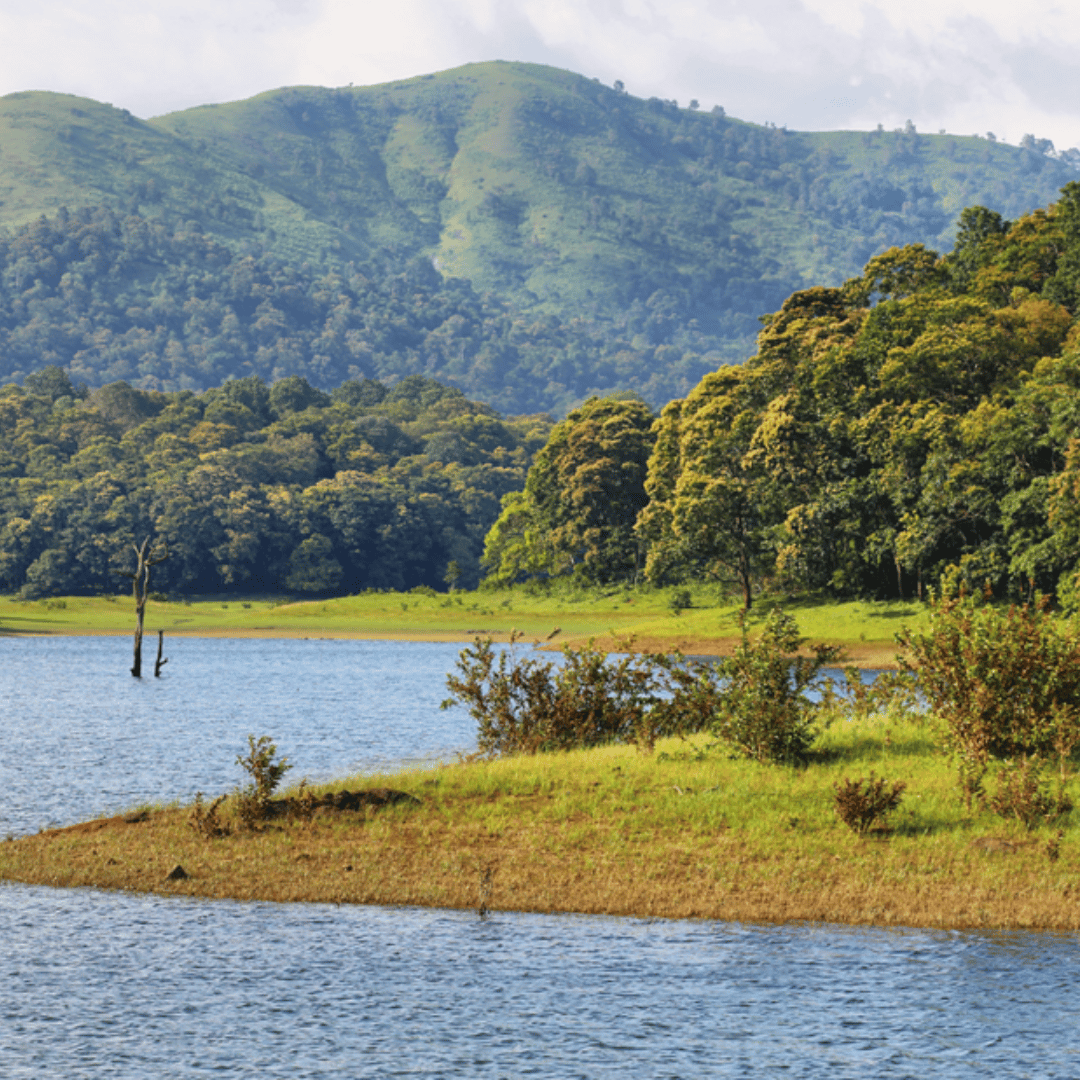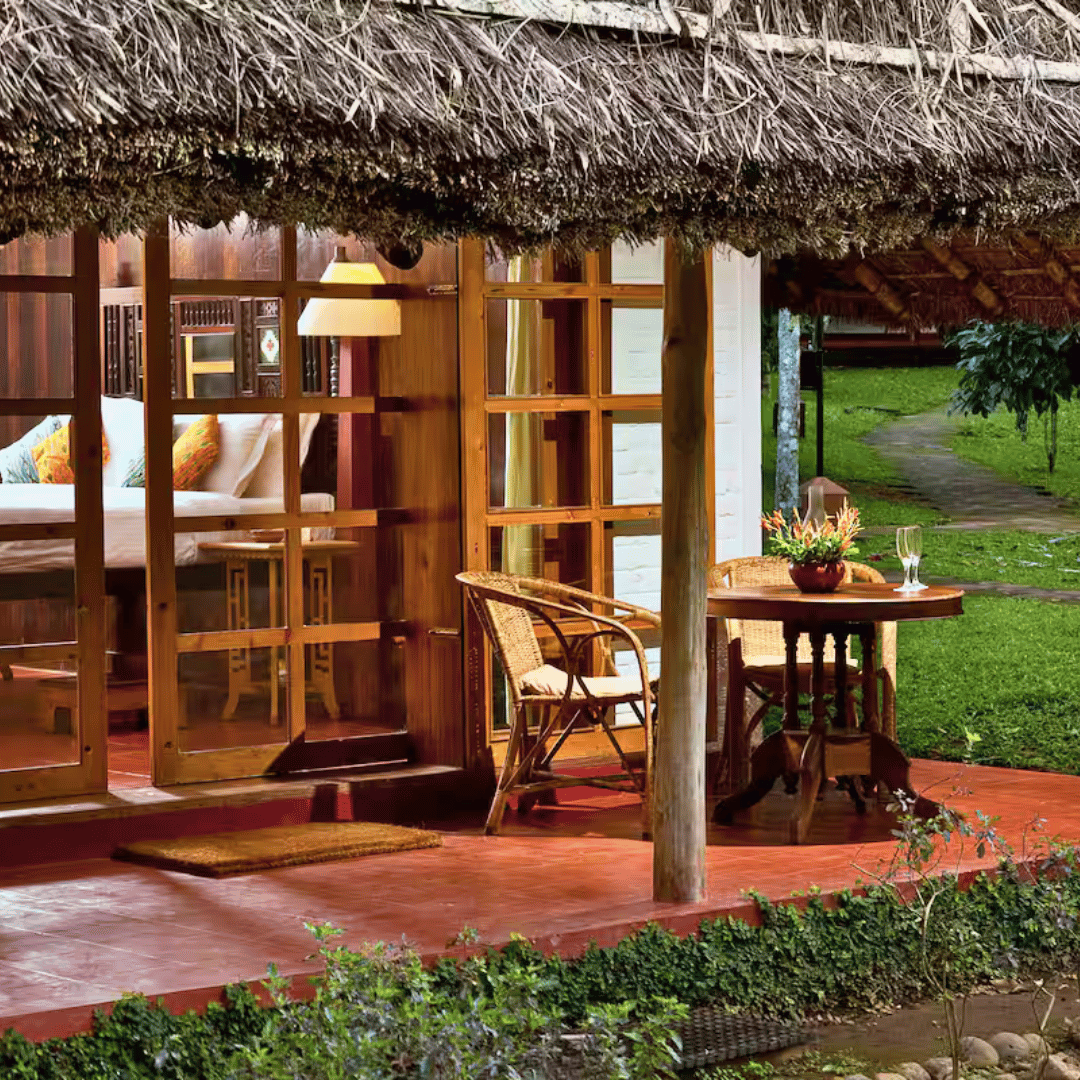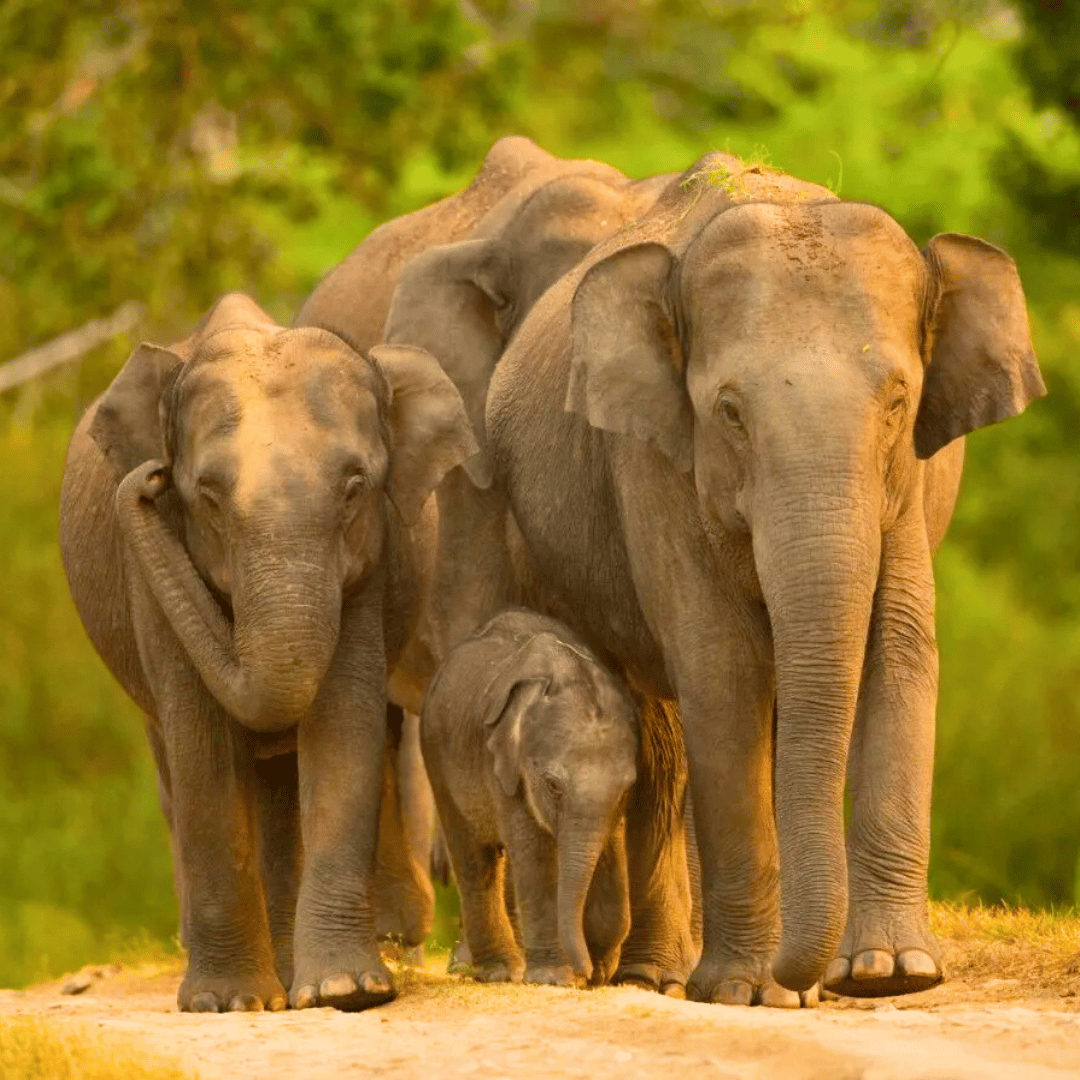
India Wildlife Tours
Bespoke Packages Crafted With Care
The wildlife of India is as diverse as its culture, offering an incredible range of experiences for nature enthusiasts. From the dense jungles of Madhya Pradesh to the grasslands of Assam and the arid zones of Rajasthan, India’s national parks and wildlife sanctuaries are home to an astonishing variety of species. India wildlife tours encourage and empower travellers to search for the iconic Bengal tiger in renowned reserves like Ranthambhore, Bandhavgarh, and Kanha, or look for the elusive snow leopard in the remote mountains of Ladakh. India safari experiences are not limited to tigers - visitors may also encounter wild elephants, one-horned rhinoceroses, sloth bears, leopards, and an impressive array of birdlife. In Kaziranga National Park, visitors can witness thriving populations of rhinos and water buffalo.
In Gir National Park, it’s possible to spot the rare Asiatic lion. For birdwatchers, Keoladeo National Park in Bharatpur provides one of the best birding experiences in Asia. These types of India itineraries can also include boat safaris through mangrove forests in the Sunderbans, home to saltwater crocodiles and Royal Bengal tigers. Custom India wildlife tours with India Unbound are privately designed to balance heritage and wilderness, with expert guides, private drivers and boutique stays. Based in Melbourne and creating private India journeys since 2007, we design flexible and memorable adventures for Australian travellers seeking authentic encounters and a memorable glimpse into India’s rich ecosystems.
Choose Your India Wildlife Tour Package
India Safari Travel Advice For First Time Visitors
-
India’s “Big Five” is a term used to describe five of the country’s most iconic and sought-after wild animals, each symbolising the rich biodiversity found across its varied landscapes. Inspired by the African Big Five, this version highlights species that draw wildlife enthusiasts, photographers, and conservationists to India’s national parks and reserves.
1. Bengal Tiger
The Bengal tiger is the undisputed star of India’s wildlife. Majestic, powerful, and elusive, it roams forests and grasslands across central and northern India. Best seen in Bandhavgarh, Ranthambhore, Kanha, and Corbett National Parks, tigers are a major highlight of any India safari.2. Indian Elephant
Found in the lush jungles of southern and northeastern India, the Indian elephant is a symbol of strength and wisdom. Periyar, Nagarhole, and Kaziranga are among the top places to observe herds in the wild, often near rivers and watering holes.3. Indian Leopard
Stealthy and highly adaptable, Indian leopards are harder to spot but thrive across much of the country. Sightings are best in places like Jawai and Bera in Rajasthan, Kabini in Karnataka, and the forested hills of Satpura and Nagarhole.4. Indian Rhinoceros
Also known as the greater one-horned rhinoceros, this prehistoric-looking species is now largely restricted to the floodplains of Assam. Kaziranga National Park is the stronghold of the species, with the largest wild population in the world.5. Asiatic Lion
Unlike its African cousin, the Asiatic lion is smaller and found only in Gujarat’s Gir National Park. This is the only place in the world where these critically endangered lions roam free, making Gir a must-visit for those hoping to complete the Big 5 in India.Together, these five animals represent the diversity and drama of Indian wildlife. Spotting them in their natural habitats offers not just incredible photo opportunities, but also a deeper appreciation of India’s conservation efforts and ecological richness.
-
For those seeking an experience that blends remarkable biodiversity, dramatic landscapes, and deep cultural context, India wildlife tours and safaris are absolutely worth it.
Unlike the wide savannahs of Africa, India offers a more varied and often more intimate safari experience, where sightings can feel hard-won but incredibly rewarding.The country is home to a wide range of species, including some of the rarest and most iconic animals in the world. Bengal tigers, Indian elephants, one-horned rhinoceroses, leopards, and Asiatic lions are just a few of the highlights. National parks such as Bandhavgarh, Kanha, and Ranthambhore offer exceptional chances to see tigers, while Kaziranga in Assam provides the best opportunity to view wild rhinos. In Gujarat’s Gir National Park, visitors can spot the last remaining Asiatic lions in the wild.
What makes India safaris unique is the diversity of environments. From the wetlands of the northeast to the teak forests of central India and the arid scrublands of the west, each park has its own character and species. Safaris aren’t limited to jeeps either - some parks offer walking, canoe, or boat safaris, making for a more immersive experience.
There’s also a strong conservation and community focus at many of the lodges, where travellers can enjoy high standards of comfort while supporting local initiatives. Combined with the ability to link wildlife experiences with nearby cultural sites, India safaris offer a rich and distinctive alternative to more conventional wildlife holidays.
-
India is home to a wide range of protected areas, but five major wildlife reserves stand out for their ecological importance, biodiversity, and visitor experience.
Jim Corbett National Park, located in Uttarakhand, is India’s oldest national park and the first to come under Project Tiger in 1973. Set against the backdrop of the Himalayan foothills, it offers a rich mix of landscapes - think rivers, grasslands, and sal forests. Corbett is home to tigers, elephants, leopards, and over 600 species of birds, making it a favourite among both wildlife enthusiasts and birdwatchers.
In Central India, Kanha National Park is often regarded as one of the best-managed reserves in the country. Known for its scenic meadows, dense forests, and the endangered barasingha or swamp deer, Kanha also supports a strong population of tigers and leopards. Its conservation success and excellent infrastructure make it ideal for wildlife safaris.
Ranthambhore National Park in Rajasthan is perhaps the most famous reserve for tiger sightings. Its mix of dry deciduous forest, open plains, and historic ruins offers dramatic scenery and good chances of spotting tigers. The park also supports sloth bears, hyenas, marsh crocodiles, and a variety of birds.
Kaziranga National Park in Assam is a UNESCO World Heritage site and the best place to see the endangered one-horned rhinoceros. Spread across floodplains and tall grasslands, it also hosts wild elephants, buffalo, tigers, and wetland birds in large numbers. Its conservation efforts have led to significant population recoveries for several species.
Finally, Gir National Park in Gujarat is the only place in the world where Asiatic lions live in the wild. This dry forest reserve also shelters leopards, jackals, and antelope. Thanks to focused conservation, Gir has become a success story in wildlife protection and remains a unique destination for those hoping to see lions outside of Africa.
Together, these five reserves represent the diversity and richness of India’s natural heritage and offer some of the best opportunities to witness wildlife in their natural habitats.
-
The best wildlife sanctuary to visit in India depends on what you're hoping to see, the time of year, and the overall experience you’re after. However, Kanha National Park in Madhya Pradesh is widely regarded as one of the top choices due to its biodiversity, conservation success, scenic beauty, and safari infrastructure.
Kanha offers vast meadows, dense sal forests, and a strong chance of seeing Bengal tigers, leopards, sloth bears, and the rare barasingha (swamp deer), which was brought back from the brink of extinction here. The park is well-managed, with experienced naturalists, well-organised jeep safaris, and quality lodges nearby.
That said, the "best" sanctuary can vary depending on your interests and location during your time in India:
For tigers: Bandhavgarh, Ranthambhore, or Tadoba are excellent
For one-horned rhinos: Kaziranga National Park, Assam
For Asiatic lions: Gir National Park, Gujarat
For elephants: Nagarhole or Periyar
For birdwatching: Keoladeo Ghana (Bharatpur), Rajasthan
Each sanctuary offers a different experience, from boat safaris in Kerala to grassland drives in Assam. The best one for you depends on the species you want to see and the kind of landscape and experience you prefer.
-
The best time for wildlife safaris in India is typically from October to April, when the weather is cooler and parks are open to visitors. However, each season offers a slightly different experience:
October to February (Peak Season) - This is the most pleasant time to visit, with cooler temperatures and lush post-monsoon landscapes. It's ideal for first-time visitors and photographers, as the scenery is vibrant and sightings are still frequent, especially in the mornings. Most parks reopen in October after the monsoon.
March to early May (Dry Season) - As water sources dry up, animals gather around remaining waterholes, making this the best time for consistent wildlife sightings, particularly of tigers and leopards. Temperatures rise sharply, especially in central and northern India, but experienced safari-goers often favour this period for its high chances of big cat encounters.
June to September (Monsoon) - Most national parks in central and northern India close due to heavy rains, although a few like Periyar and Kabini in the south remain partially accessible. Wildlife viewing is limited, but the forests are lush and birdlife is abundant in some regions.
In short, October to April offers the best combination of weather and wildlife activity, with March and April being particularly good for big cat sightings.
-
When going on a wildlife safari in India, it's important to dress in a way that’s comfortable, practical, and respectful of the natural environment. Neutral colours like khaki, olive, beige, or brown are ideal. These shades help you blend into the surroundings and avoid startling the wildlife. Bright colours and bold patterns are best avoided, as they can be distracting during game drives.
Layering is key, especially if you’re travelling between October and February. Early mornings and evenings can be cool, even cold in some parks, while the midday sun can be intense. A light T-shirt or long-sleeve top paired with a fleece or windbreaker allows you to adjust as the temperature changes throughout the day.
Long sleeves and full-length trousers offer protection from both sun exposure and insects. Choose breathable, lightweight fabrics that wick moisture and keep you comfortable on longer drives or nature walks. If your itinerary includes walking safaris or treks, sturdy shoes or lightweight hiking boots are recommended. For jeep safaris, comfortable closed-toe shoes or trainers are usually sufficient.
A wide-brimmed hat and a good pair of sunglasses are essential, especially in open vehicles under strong sunlight. A scarf or buff can come in handy to protect against dust during drives on dry tracks. Lastly, remember to apply sunscreen and insect repellent before heading out to ensure you're protected throughout the safari.
P.S. don’t forget your camera!
Top India National Parks To Explore
Plan Your India Wildlife Tour With India Unbound
Established in 2007, India Unbound is an award-winning travel company specialising in custom-made journeys and private tours to India. With more than two decades of experience exploring this fascinating nation, we create tailor-made itineraries for discerning travellers looking for a real adventure.
When you start to research a trip to India, it’s easy to feel overwhelmed by the seemingly endless possibilities. At India Unbound, we’ve made this process easy. To see India, we simply need you to tell us relevant information about yourself and the type of travel experience you are looking for - whether it’s a wish list of places you want to visit, a style of travel, a particular interest or theme that you want to explore, or all of these factors. Using this information, we curate a custom-made India private tour just for you. It’s that simple.
India Safari Lodge Recommendations


